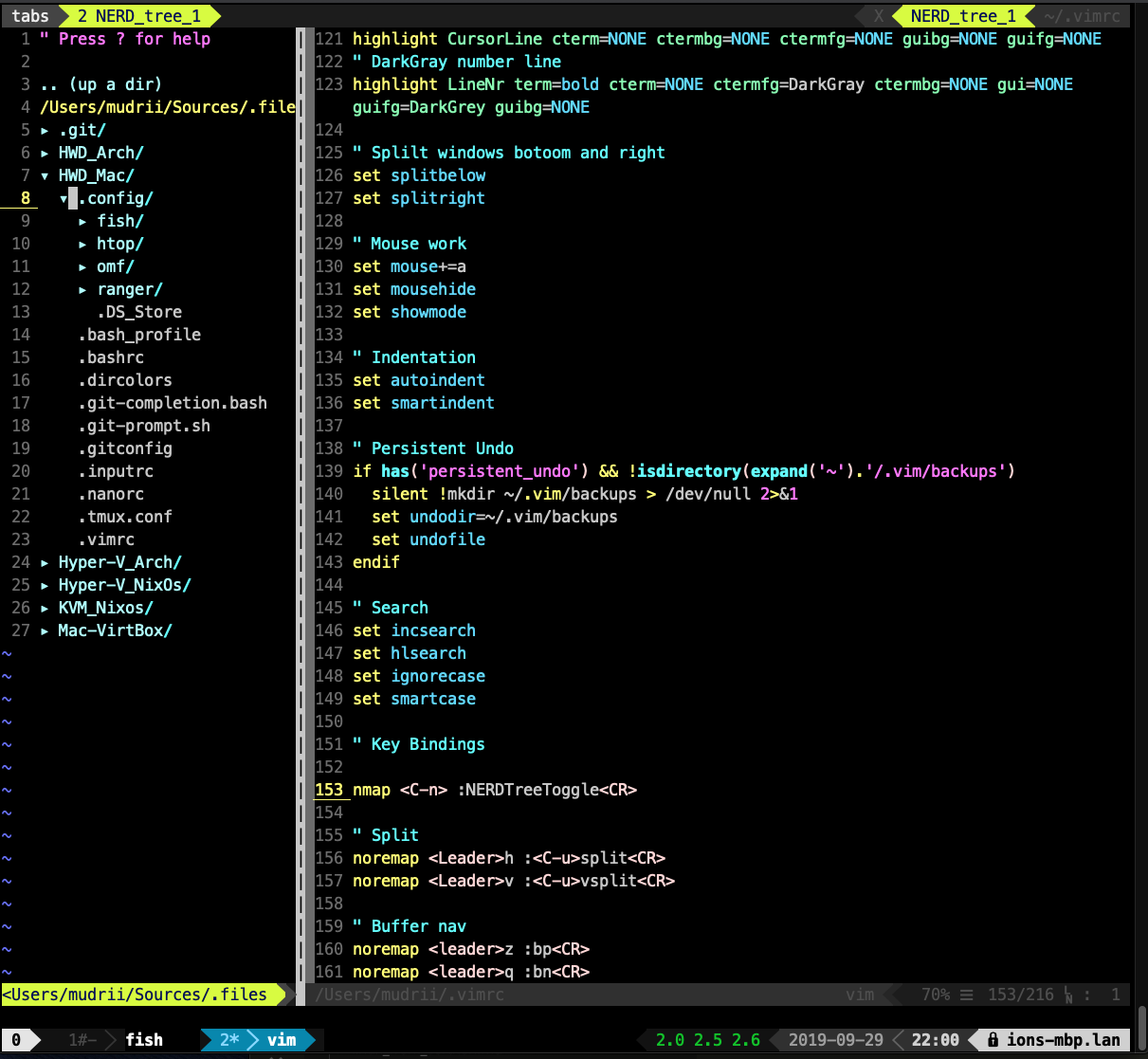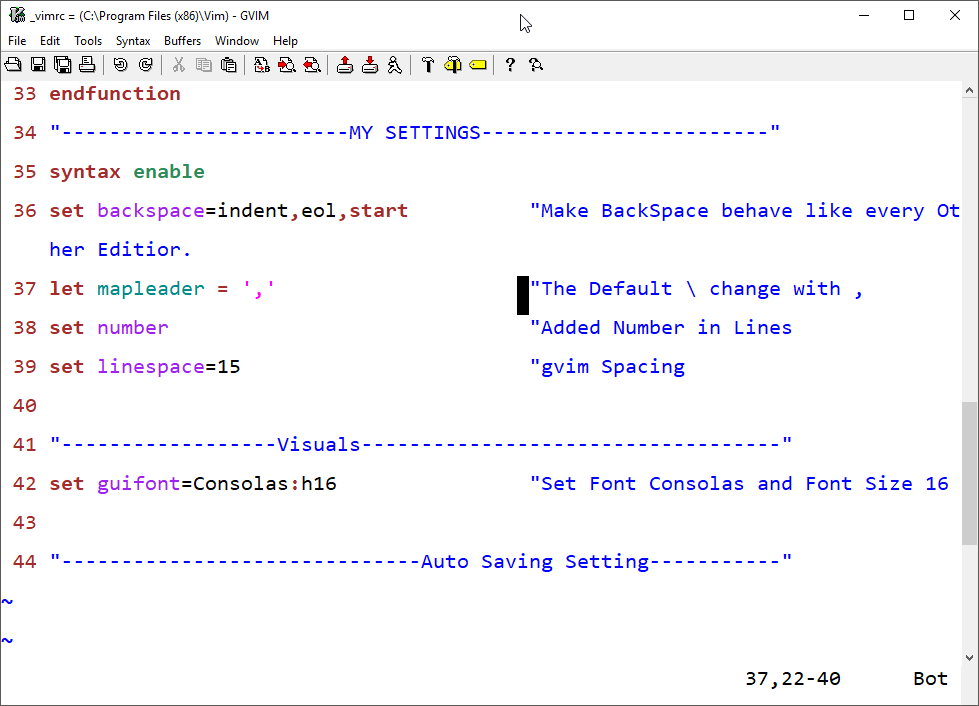

- #Mac vim config file software#
- #Mac vim config file code#
- #Mac vim config file password#
- #Mac vim config file Pc#
The latter approach is generally recommended. Here to explain, ~/is the user's home directory, equivalent to/Users/username/. Is also possible Copy the global version of vimrc file to the user's home directory as the user version of vimrc:
#Mac vim config file password#
Sudo sh (you will be prompted to enter the password of the current user) If there is no vimrc file (normally there will be), users can create it in the following ways:įirst create the user version vimrc (the default is not available under Mac), you can create an empty user version vimrc file in the user's home directory: Open if you have it, create if you don't, use : wq! to force save and exit after opening and editing The content of the user configuration file will overwrite the content of the system configuration file, so just edit the user configuration file. :echo $HOME should be under the (/Users/apple is the root directory of the user terminal) under normal circumstances :echo $VIM should be under the (/usr/share/vim) directory under normal circumstances If you don't know which directory $VIM or $HOME is, you can use the following command in vi to view: User vimrc file: "$HOME/.vimrc" "Note: vimrc user configuration file location" System vimrc file: "$VIM/vimrc" "Note: vimrc system configuration file location"
#Mac vim config file code#
If you do not want MacVim attached to the application (Applications) directory, and want the terminal to call mvim, you can edit the /etc/bashrc file ( $ sudo vim/etc/bashrc ), add the following code to the file, : WQ! Forced Save and exit)Īlias mvim='/Volumes/App/App/MacVim.app/Contents/MacOS/MacVim'Įnter in the terminal: $ vi Enter in the vi editor: :version can view the location of vimrc in the system The mvim copied to /usr/bin/ This directory ( $ sudo cp -f mvim/usr/bin/ ) (terminal can pass mvim file name to start MacVim edit files) Put MacVim.app in your application, which is the /Applications directory (must be put in the application directory, otherwise terminal call: mvim will not find the MacVim executable file) There are three files in the decompressed package obtained after downloading (MacVim, mvim, reader.txt)

InstallationThis version can support normal use under 10.10 system, the previous ones may not be opened under 10.10 This section describes installation and configuration on RPM based Linux.

Ensure that this file doesn’t have any extension. Navigate to home directory and create a new file namely. vimrc and it is located under home directory of user. Vim stores its configuration in simple text file namely. It should print the location of Vim binary. To ensure Vim is correctly installed execute below command − This section describes installation and configuration on Debian based Linux. Installation on Linux platform is quite simple as compared to Windows. We’ll add more options to this file latter on. Now Vim will show line numbers when file is opened. Open this file in text editor, enter following text and save it −

Navigate to home directory and create a new file namely _vimrc. To find current user’s home directory execute below command in terminal − Vim stores its configuration in simple text file namely _vimrc and it is located under home directory of user. At the time of writing this tutorial installer name was gvim80.exeĭouble click on installer and follow on screen instructions to complete installation
#Mac vim config file Pc#
InstallationĬlick on PC - MS-DOS and MS-Windows optionĭownload.
#Mac vim config file software#
It is simple software bundle which provides all dependencies. Vim doesn’t have any specific requirements. In this chapter, we will discuss following items − Vim is lightweight package and its installation is really simple.


 0 kommentar(er)
0 kommentar(er)
